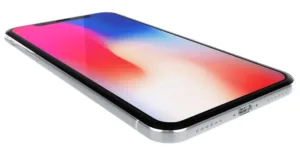According to Nikkei, Samsung’s shipments of OLED panels to Apple fell from 20 million in the first quarter of 2018, to just 6 million in the second, with operating profits dropping 92% year-on-year. The publication points out that the company was expecting to ship in the range of 12 to 15 million panels to Apple during the second quarter, so these results come in far below its expectations.
However, sources say that a turnaround began during the second quarter, as Samsung geared up production of OLED panels for its next flagship smartphone, the Galaxy Note 9, due for release in August, as well as the two new OLED iPhones rumoured to be launching in September.
Sales of the iPhone X were far below expectations during the second quarter of 2018, reports have said. Apple saw a growth of 32% in its profits, though this was thanks more to the iPhone 8 and iPhone 8 Plus — both of which feature LCD displays — than their more expensive OLED counterpart.
Recently, Apple has been forging partnerships with other OLED suppliers, including LG and BOE, with a view to relying less on Samsung — its closest rival in the smartphone market — for its OLED technology.
Samsung’s overall operating profit dropped 4.9% quarter-on-quarter, to 14.87 trillion won ($13.3 billion), while revenue fell to 58.48 trillion won ($52.22 billion), a 3.4% sequential decline.
Analyst Comment
There are days when I’m glad I’m not in certain jobs and one that I really wouldn’t like is to be the planner for Samsung’s OLED business. The smartphone is a huge business, but only a handful of companies dominate it and one or two decisions or miscalculations can cause massive and very rapid shifts in the market, which can lead to real difficulty. Many (many!!) years ago, I was involved in the steel business and there were some similarities in the production side – stopping and starting production was very tricky and capacity planning had to be years in advance. Customers, on the other hand, in businesses such as construction, often had wide swings in purchasing as the business was very cyclical. One approach was to use long term contracts with pricing penalties against the supplier if for any reason they couldn’t meet a certain level of high demand and the buyers paid a penalty if their orders were below a certain level. However, that was a technologically stable business with little or no ‘branding’ effect – the materials were commodities. It’s hard to see how that kind of concept could be supplied in the incredibly fast-moving smartphone business. (BR)

